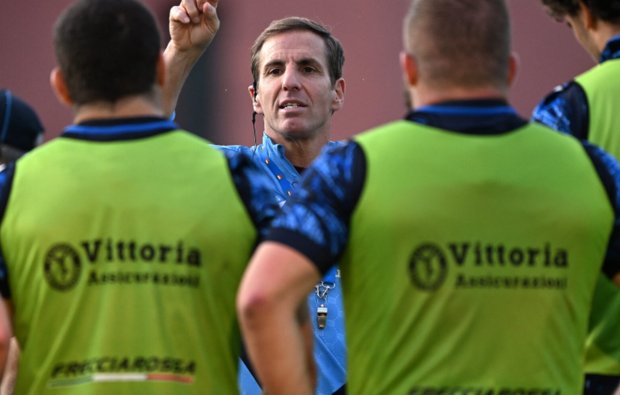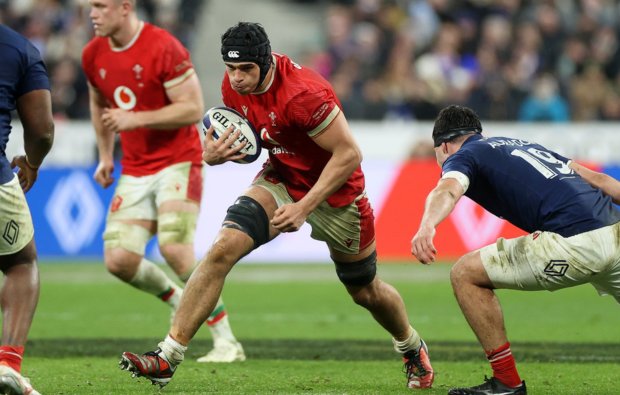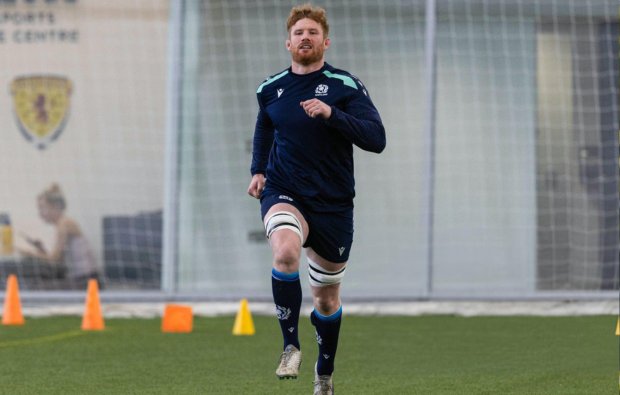‘A thing of beauty’ - Analysing the mighty mauls that produce so many tries in the BKT URC
- 1710

It may not be everyone’s cup of tea, but there’s no doubting just what a potent weapon the driving lineout maul is in the BKT URC.
We have all seen the routine. A penalty is awarded, a team kicks to the corner, they win the lineout and the forwards rumble over. Try scored.
Done well, it is so hard to stop.
You only have to look at the stats for proof of just how productive it can be.
Last season, Ulster Rugby hooker Tom Stewart set a new league record of 16 tries and a significant number of those came from close-range lineout drives.
This term, it’s another No 2 who is top of the chart, with Johnny Matthews of Glasgow Warriors having already touched down no fewer than ten times.
Similarly, his maul haul has been crucial to that tally, with Glasgow so proficient in that department.
It was the source of five tries for them against Munster in Round 7, on top of the four they scored from it in beating the Ospreys in Round 4.
Like Stewart, who has racked up a further six tries himself this season, Matthews is so adept at marshalling the drive from the back of the maul and knowing when to break away for the line.
But he’s quick to pass the praise on to those doing the donkey work around him.
“I’m lucky to be on the back of a fantastic driving maul here,” said the Six Nations hopeful.
“I am always quick to credit the lads in front because without them the man at the back wouldn’t be able to get the ball over the line.
“We do work really hard on it in training and I think that shows through.”
While some people may not be huge lovers of the maul drive, preferring to see the ball moved through the hands, it’s understandably an aspect of the game that hookers are very fond of, given they tend to be the main beneficiaries.
That’s certainly the case with the Ospreys’ Sam Parry who has claimed a fair few tries from it himself over the years.
“It’s a thing of beauty when it’s perfected,” said the front row man.
“The opposition just can’t stop it.
“It’s technical and teams are very good at it now. If you don’t get it right defensively in the first two or three seconds, it’s pretty much all over.
“It’s definitely a good skill or weapon to have in your armoury.
“Obviously if you’ve got eight of the biggest men, that will help, but there’s ways and means of going about it now even with smaller teams. Technique is massive.
“You can manipulate a corner on the maul and once you get round that corner, it’s very hard to stop.
“As I say, it’s a thing of beauty when it picks up speed and you see the hookers going over.”
The lineout maul was crucial to the Ospreys’ comeback win over Cardiff Rugby on New Year’s Day, with a mighty surge earning the penalty try which sparked their revival.
“We have got a good success rate there and we definitely pride ourselves on that, but it’s not something we take for granted,” said hooker Parry.
“Every week, as forwards, we go at each other flat out in training to make sure we are mentally and technically there.
“We will have one pack attacking and one pack defending. Then, if you don’t score, you flip over.
“We put a lot of pressure on it. If you don’t get it right, you are defending, which is a very hard skill.”
While hookers have a pivotal dual role in terms of hitting their targets at the lineout and then rounding off the maul, there’s also a big responsibility on the jumpers.
One such leaping lock is Cardiff Rugby youngster Teddy Williams, who is someone who really studies the lineout and works hard on that area of his game.
He provides a revealing insight into the various ploys sides adopt when it comes to driving mauls.
“Different teams will have different methods,” said the Wales squad contender.
“Some sides will try and get what we call a big punch and try and get it going straight away.
“Other teams will keep it in there a bit longer and build some pressure. The Ospreys went for quite a lot of longer mauls against us last week. We did all right initially, but then the second wave comes on.
“Different teams come with different weapons, I suppose.
“It’s difficult to stop, but there are ways of doing it if you are on the money. It’s looking at how best you can prepare for what the opposition brings.
“You do spend quite a bit of time on it in the week as forwards. It’s all about practice, both in attack and defence.”



















